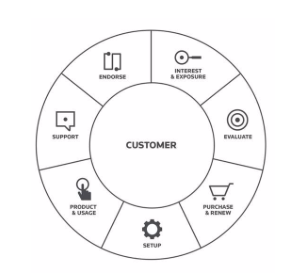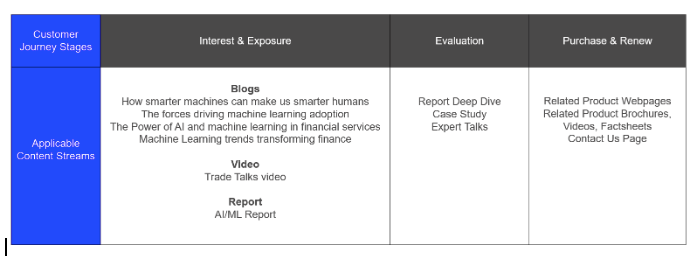Developing A Global Content Strategy
Over the last several months I’ve had the privilege to lead on the development of our global Refinitiv Content Strategy – helping find that perfect balance between customer needs & business goals. With support from Cognito Media (marcomms & digital agency), we’ve developed a content strategy roadmap that will take Refinitiv marketing into 2020 stronger and more aligned than ever before. I thought as I go through this process, I’d share specific projects, ideas along the way, challenges & opportunities and more with the hopes that this information might help others on their content strategy journey within their organisation.
The Challenge
Firstly our challenge: as a company, we create a significant amount of great content from high level thought leadership reports, to blog articles, press releases, infographics, videos, brochures, factsheets – the list goes on. In silo, these pieces are exceptional as standalone content, however what could we achieve by better connecting the dots (& our content) in a way that speaks to our customers? How could we use existing marketing technology to better tell that story? How can we take our audience on a journey from awareness through to sale with our content, driving leads for the business?
As part of the new Refinitiv Content Strategy, these questions have helped us focus on the larger customer journey & overall content experience, while at the same time driving forward our business goals. While we look at embedding this wider Content Strategy into our operating rhythm in 2020, one opportunity stood out as a quick win.
The ‘Always On’ Campaign And Our Content Strategy
Like most large organisations, we produce various high level reports for our target audiences – with the main goal of loosening the status quo with top level educational content. These large reports usually sit on our webpages behind a gated form, and have a general promotional campaign surrounding the content. Aside from the normal promotional campaign, there was an opportunity to simultaneously utilise our marketing technology to better target our organic new traffic who complete a form and enter into our marketing database.
The question: After download of our thought leadership content aligned to our Interest & Exposure stage of the customer journey, how can we serve this audience more of our content, in a thought out way? How can we lead them from Interest to Evaluate to Purchase/Renew with that content, driving leads, opportunities and sales for the business? Can we use Marketing Automation to execute this strategy?

The Content Audit
I decided to test this out on a specific piece of content – our recent AI/Machine Learning Report. I started by putting together a content audit of all our relevant AI/ML content cross channel, and placed that content against the stages of the customer journey – to understand where we had gaps, what content might help us tell our story, and how.

With this drafted out as above, I then looked at what goals & outcomes we were looking to achieve at each of these stages of the journey.
Our goals for each stage, utilising existing content:
- Loosen the status quo with top level educational content, show that we understand the buyer’s problem by articulating their known and unknown pain points.
- Support the need to change with industry stats and trends. Help buyer establish their buying criteria.
- Illustrate the tangible (ROI) and intangible benefits of solving the problem. Spell out the impact. Move Buyer from Inaction to Action, show why our solution is the best fit.
Off the back of this, I took the existing content for each stage and created a story around this theme – with the key goals across each stage taken into account, and with the help of email as the channel for activation.
MarTech For Channel Activation
I found the easiest way to execute the above strategy was to utilize our existing marketing automation software. By taking the existing content, and mapping to the stages of the customer journey, I was able to develop a user flow with key decision steps to lead our contacts through the marketing funnel based on their specific actions. The best part about using marketing automation, is that once this is setup, the contacts flow through continuously creating an ‘always on’ campaign that can run indefinitely as long as the overarching content is relevant.
Note: As contacts flow through these systems at different points, the dates need to be set as alotments of time, not set dates – ie: ‘wait 1 week’ not ‘send on 15 Oct’. Also note to set parameters for when contacts might receive an email – based on time zone, work week, 9-5, etc.
Conclusion
As a relatively new campaign, we have already seen leads flowing in organically, as well as extremely high engagement rates across open, clicks, and CTO rates. The idea moving forward is to duplicate this process across all major thought leadership reports.
This is just one example of how we will be activating our Content Strategy into the following year, which I’m extremely excited about. Looking firstly at mapping out what content speaks to our audiences & personas, how that content aligns to the stages of the customer journey, and how that very specifically drives more leads & sales for the business. All the while utilising our existing expertise & tech to deliver this across channel.





